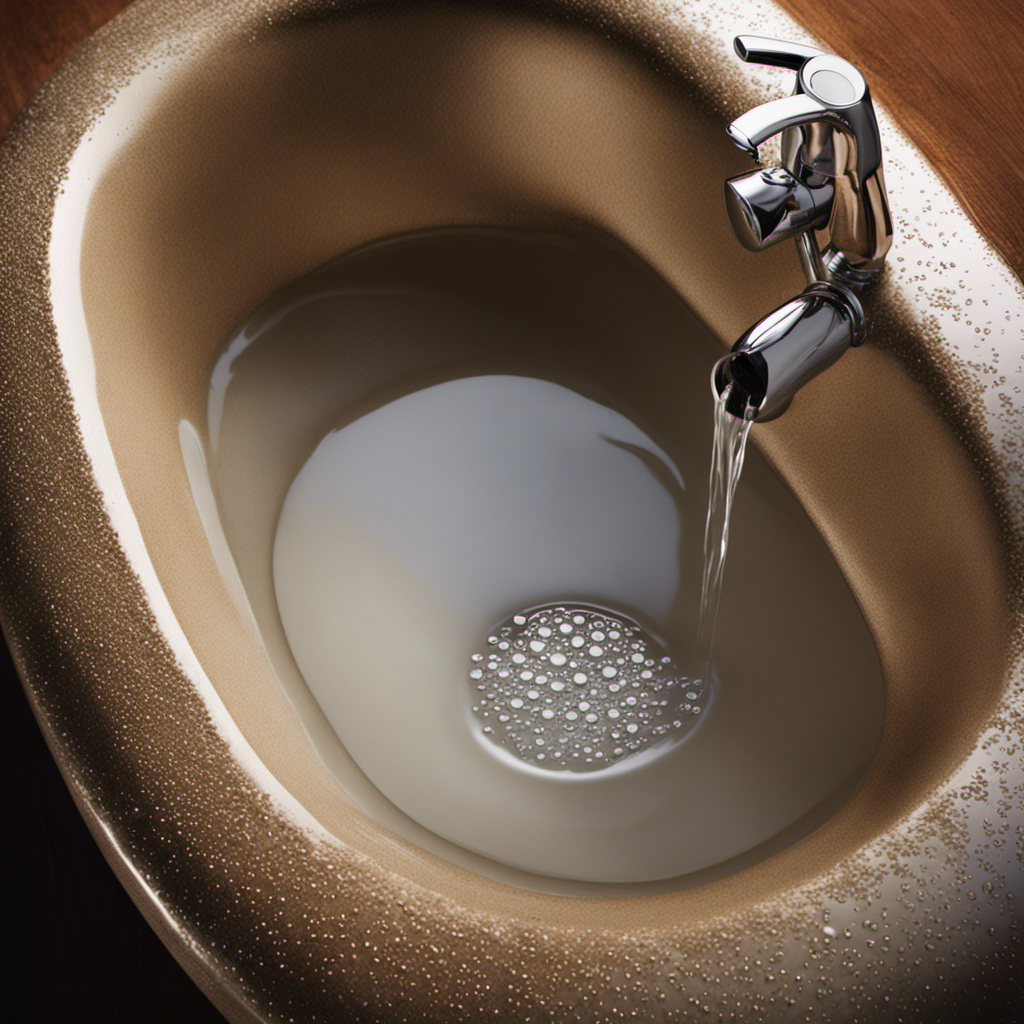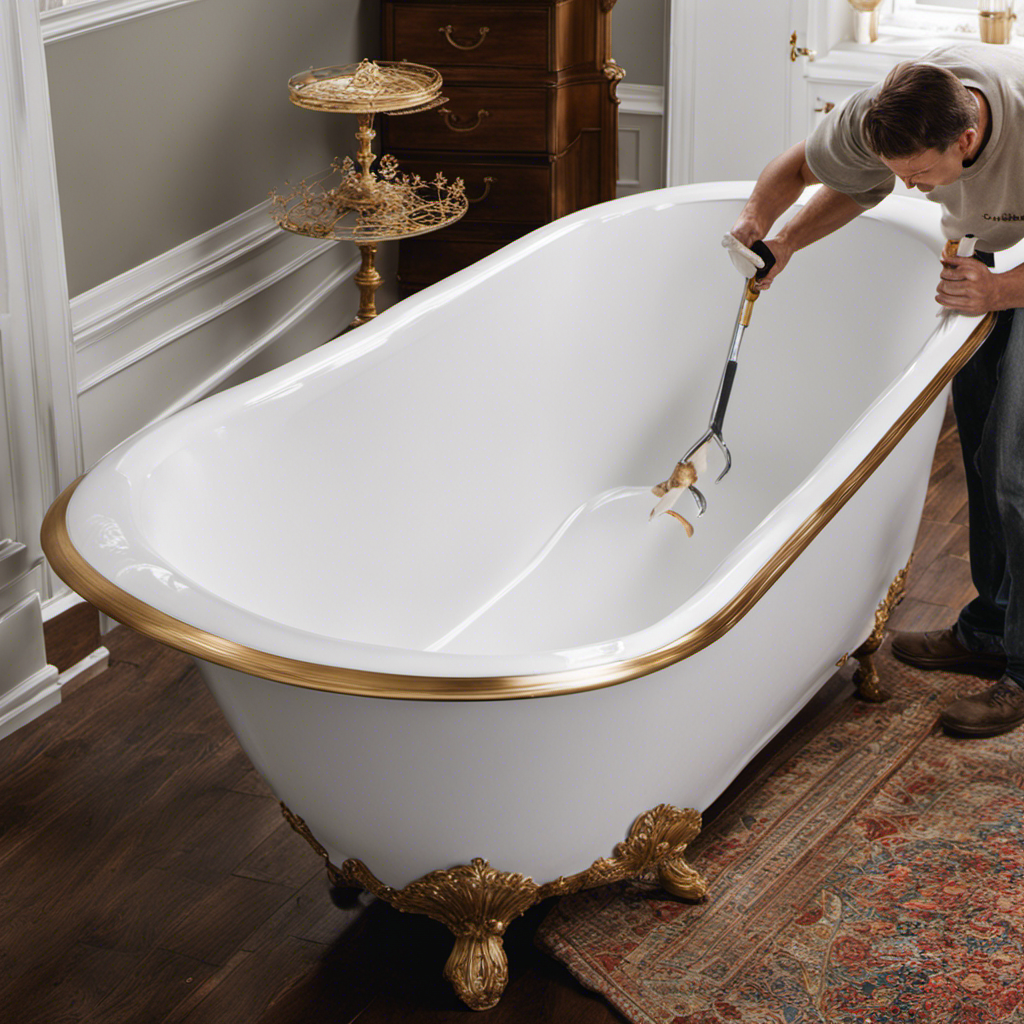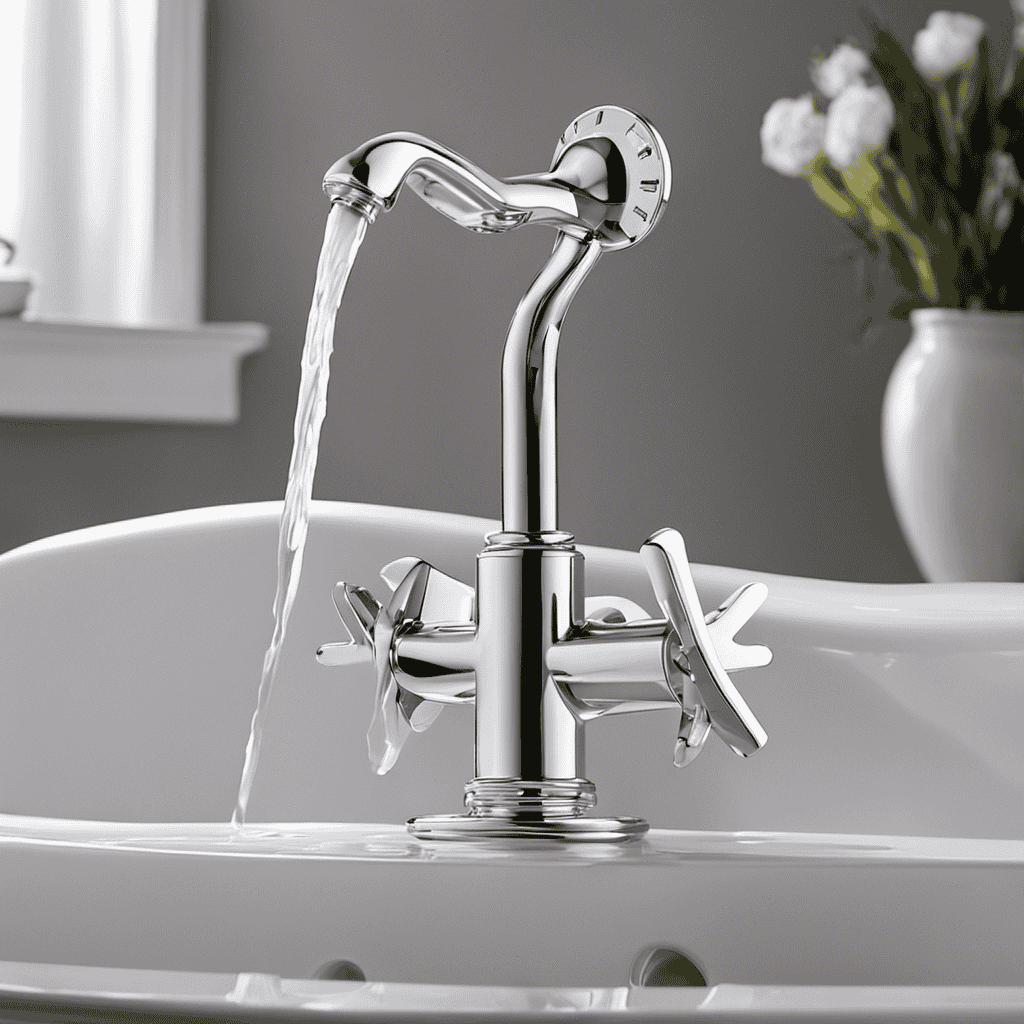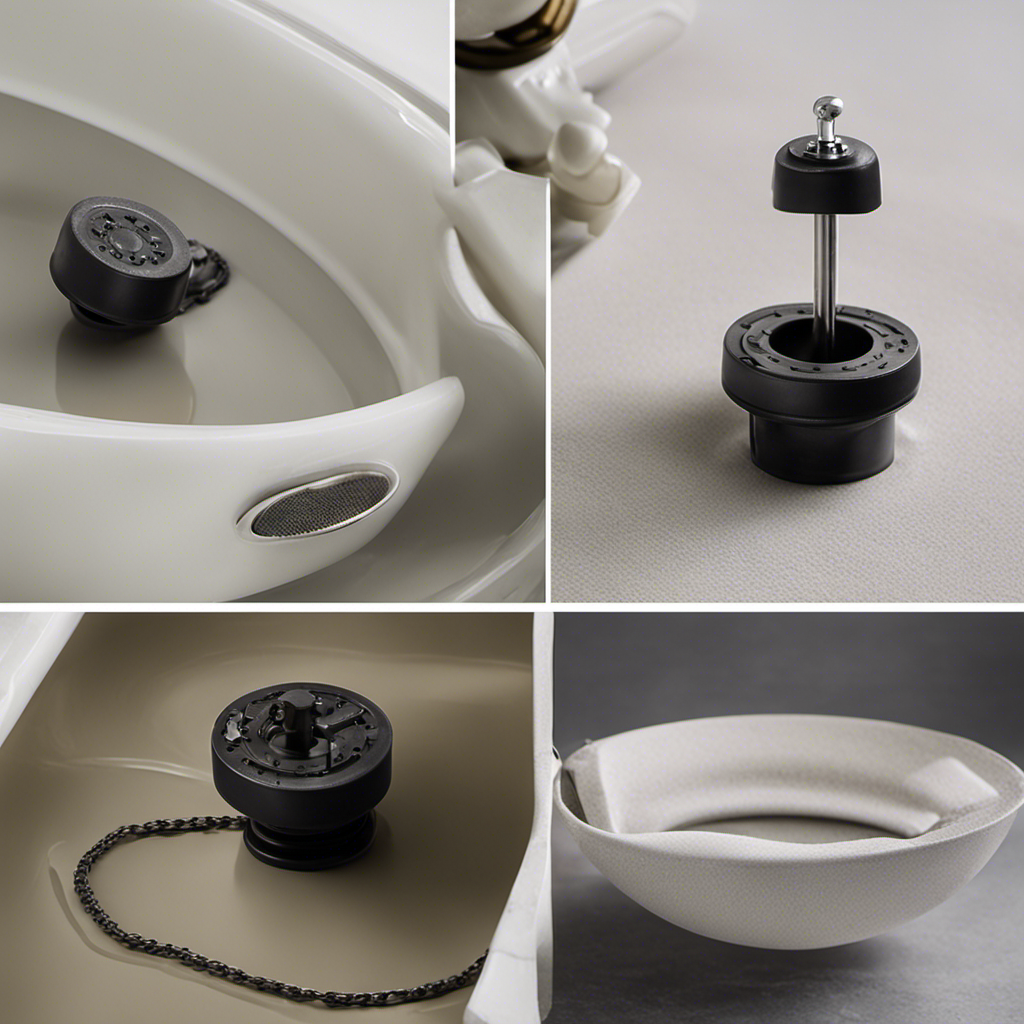Are you tired of staring at that unsightly crack in your plastic bathtub? Don’t worry, you’re not alone. Many homeowners face this frustrating issue, but the good news is, you can fix it yourself!
In this article, we will guide you through the step-by-step process of repairing a cracked plastic bathtub. With a little bit of effort and some simple materials, you’ll be able to restore your bathtub to its former glory in no time.
Say goodbye to that eyesore and hello to a beautifully repaired tub!
Key Takeaways
- Carefully examine the bathtub to locate the crack and determine the severity of the damage.
- Use the appropriate repair kit for the specific type of plastic bathtub.
- Clean and prepare the surface before applying the repair solution.
- Follow the manufacturer’s instructions carefully and allow sufficient time for the solution to cure properly before using the bathtub again.
Identifying the Crack
To start, you’ll want to carefully examine the bathtub to locate the crack. Understanding the different types of bathtub cracks can help you determine the severity of the damage and the best course of action for repair.
Hairline cracks, which are small and shallow, can often be fixed with a DIY approach using a bathtub repair kit. However, if you notice a larger crack that extends deeper into the structure of the bathtub, it is advisable to call a professional for help. These types of cracks may indicate more extensive damage and require specialized knowledge and equipment for proper repair.
Additionally, if the crack is accompanied by other issues such as leaks or instability, it is crucial to seek professional assistance to prevent further damage and ensure your safety.
Gathering the Materials
First, you’ll need to gather all the necessary materials for the job. When repairing a plastic bathtub that is cracked, it is essential to choose the right repair kit and take precautions while handling chemicals. Here is a table outlining the materials you will need:
| Materials | Description |
|---|---|
| Plastic repair kit | Contains epoxy resin and hardener |
| Sandpaper | To smooth the surface for better adhesion |
| Masking tape | For creating clean edges during repair |
| Cleaning solvent | To remove any dirt or grease from the crack |
| Safety goggles | Protect your eyes from chemical splashes |
Choosing the right repair kit is crucial as different kits are designed for specific types of plastics. Be sure to read the instructions and follow them carefully. When handling chemicals, take precautions such as wearing gloves and working in a well-ventilated area. Always read the safety instructions on the labels and dispose of any waste materials properly. By following these precautions and using the right materials, you can successfully repair your plastic bathtub.
Preparing the Surface
Before you begin preparing the surface, make sure to clean it thoroughly and remove any dirt or debris that could interfere with the repair process. This step is crucial to ensure a successful repair.
Common bathtub problems such as cracks and chips can be repaired with a few simple steps. Start by cleaning the surface with a mild detergent and a soft cloth. Make sure to remove any soap scum or residue.
Next, use sandpaper to smooth out any rough edges around the crack or chip. This will help the repair material adhere better. After sanding, wipe down the surface again to remove any dust or particles.
Now you’re ready to apply the repair material and fix your bathtub.
Applying the Repair Solution
After cleaning and sanding the surface, you’re ready to apply the repair solution and fix your bathtub. The repair solution is a crucial step in the process of restoring your cracked plastic bathtub. Ensure that you follow the manufacturer’s instructions carefully to achieve the best results.
The curing time for the repair solution may vary depending on the brand and type of product you are using. It is essential to allow sufficient time for the solution to cure properly before using the bathtub again.
Common mistakes to avoid when applying the repair solution include applying too much or too little solution, not properly mixing the components, and not smoothing out the solution evenly. Take your time and be meticulous in your application to ensure a seamless repair.
Finishing and Sealing the Repaired Area
Now that you’ve applied the repair solution, it’s time to finish and seal the area to ensure a long-lasting repair. Here are some important steps to follow:
-
Proper Ventilation:
-
Open windows or use a fan to ensure good air circulation during the repair process. This will help prevent the buildup of fumes from the sealing products, ensuring your safety and comfort.
-
Tips for Preventing Future Cracks:
-
Avoid using harsh or abrasive cleaners that can damage the plastic surface of your bathtub. Stick to gentle, non-abrasive cleaners to keep your tub in good condition.
-
Be mindful of the weight you put on the bathtub. Avoid placing heavy objects or standing on the edges, as this can lead to cracks over time.
-
Regularly inspect your bathtub for any signs of wear or damage, and address them promptly to prevent further cracking.
Frequently Asked Questions
How Long Does It Take for the Repair Solution to Dry and Cure Completely?
The drying time and curing process for the repair solution can vary depending on the specific product used. It’s important to follow the instructions provided by the manufacturer to ensure proper drying and curing.
Can I Still Use the Bathtub While the Repair Solution Is Drying?
While the repair solution for your cracked plastic bathtub is drying, it’s best to find alternative solutions for bathing. Remember, "patience is a virtue," so wait for it to fully cure before using it again.
Will the Repaired Area Be as Strong and Durable as the Original Bathtub?
Yes, the repaired area should be as strong and durable as the original bathtub if the repair is done properly. However, it’s important to consider the pros and cons of repairing versus replacing a cracked plastic bathtub.
Are There Any Special Cleaning or Maintenance Instructions for the Repaired Area?
To keep your repaired bathtub looking pristine, use gentle cleaning techniques and avoid abrasive cleaners. Regular maintenance is key – apply a protective coating periodically and keep an eye out for any signs of damage.
Can the Same Repair Solution Be Used for Different Types of Plastic Bathtubs?
Different types of plastic bathtubs can be repaired using the same solution. However, it is recommended to use a specific repair kit designed for repairing cracked plastic bathtubs.
Conclusion
In conclusion, repairing a cracked plastic bathtub is a straightforward process that can save you time and money. By following the steps outlined in this article, you can easily restore your bathtub to its original condition.
For instance, John, a homeowner from Ohio, successfully repaired his cracked plastic bathtub using these techniques. With a little patience and the right materials, you too can achieve professional-looking results.
Don’t let a cracked bathtub ruin your bathroom’s aesthetics, take action and repair it today!










